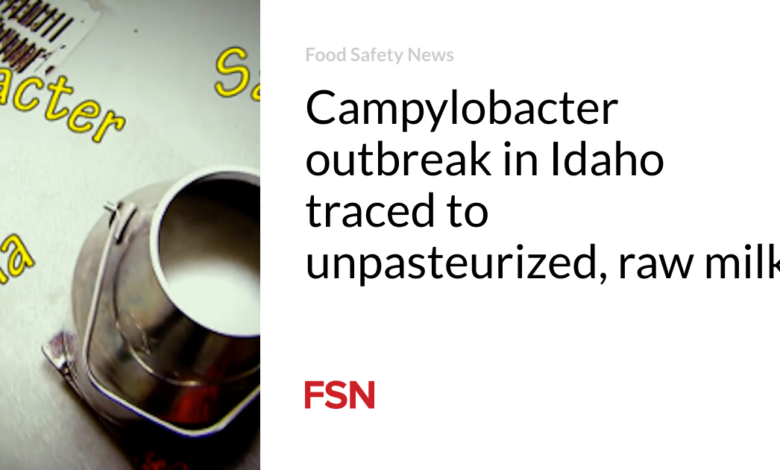Campylobacter outbreak in Idaho traced to unpasteurized, raw milk

Idaho Public Health officials are investigating recent reports of 18 people who recently tested positive for Campylobacter after drinking unpasteurized, raw milk.
The sick people reported drinking raw milk from Paradise Grove Dairy, according to the health department. The Idaho Division of Public Health is collaborating with Central District Health (CDH), Eastern Idaho Public Health (EIPH), and Idaho State Department of Agriculture (ISDA) in the ongoing investigation.
Since July 24, 18 people tested positive for campylobacteriosis, a bacterial infection. All 18 reported drinking raw milk, and 17 reported drinking raw milk produced by Paradise Grove Dairy in Jefferson County prior to getting sick. Paradise Grove Dairy distributes milk to numerous stores across southern Idaho. CDH and EIPH are conducting interviews with sick people.
Paradise Grove Dairy voluntarily stopped production Aug. 2, inspected and repaired equipment, and increased the frequency of milk testing, before resuming production Aug. 12.
Anyone who bought raw milk produced by Paradise Grove Dairy from July 19 through Aug. 2 should stop drinking it and discard it immediately.
About Campylobacter infections
Foods and beverages contaminated with Campylobacter do not look or smell bad. The bacteria is invisible to the naked eye. Anyone who has consumed raw milk or raw milk products from the dairy in question and developed symptoms of infection should seek medical attention and ask to be tested for the bacteria. Symptoms of Campylobacter infection can mimic other infections, making it difficult to diagnose.
Many people recover in a week, but Campylobacter infection can result in long-term consequences, such as arthritis, irritable bowel syndrome (IBS), and Guillain-Barré syndrome (GBS).
Azithromycin and fluoroquinolones such as ciprofloxacin are commonly used for treatment, but resistance to fluoroquinolones is common.
Campylobacter infection symptoms usually begin two to five days after exposure and are characterized by diarrhea (frequently bloody), abdominal pain, fever, nausea, and sometimes vomiting. More severe illness can occur, including bloodstream infection and symptoms mimicking acute appendicitis or ulcerative colitis.
(To sign up for a free subscription to Food Safety News,click here)



